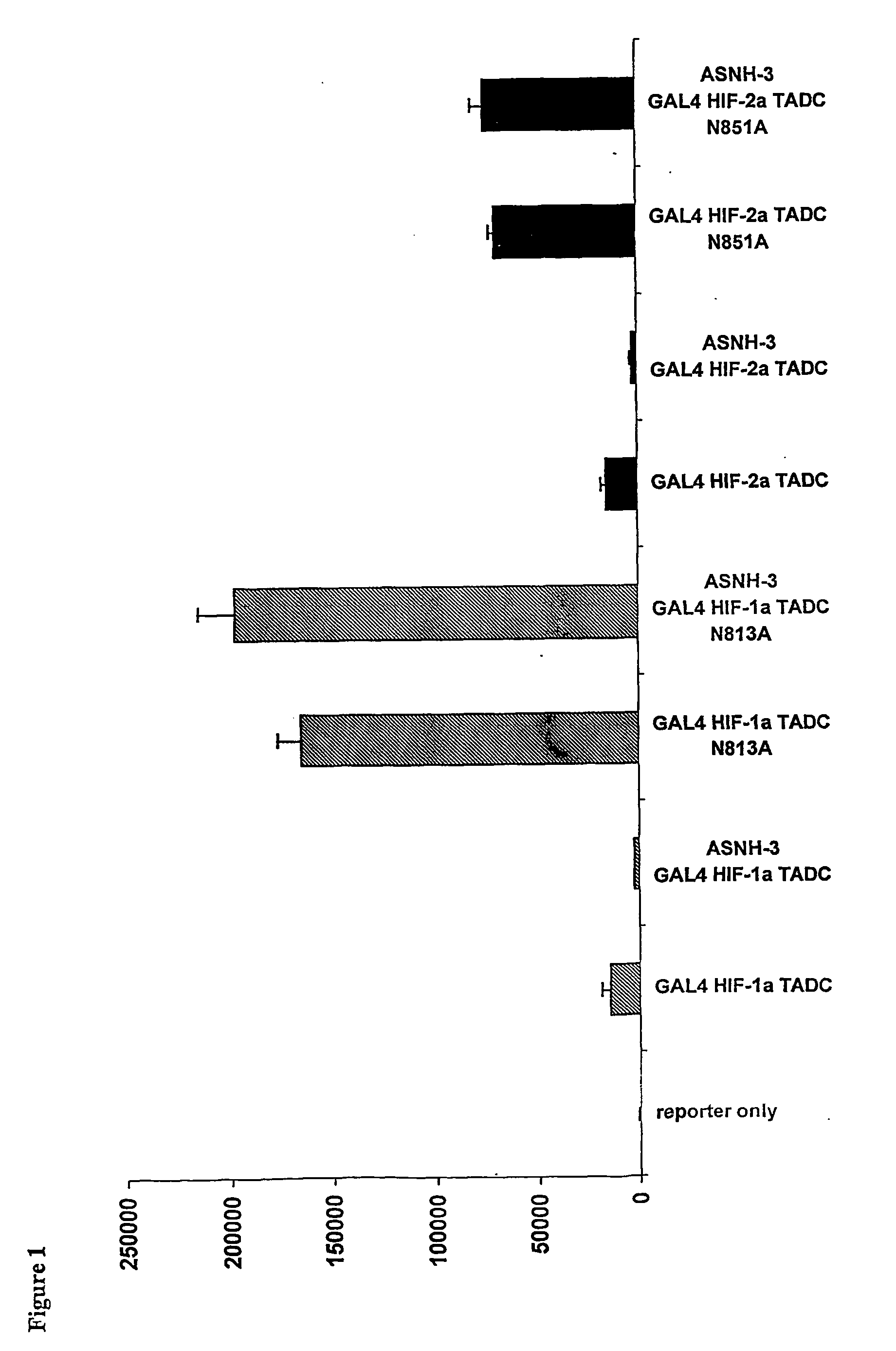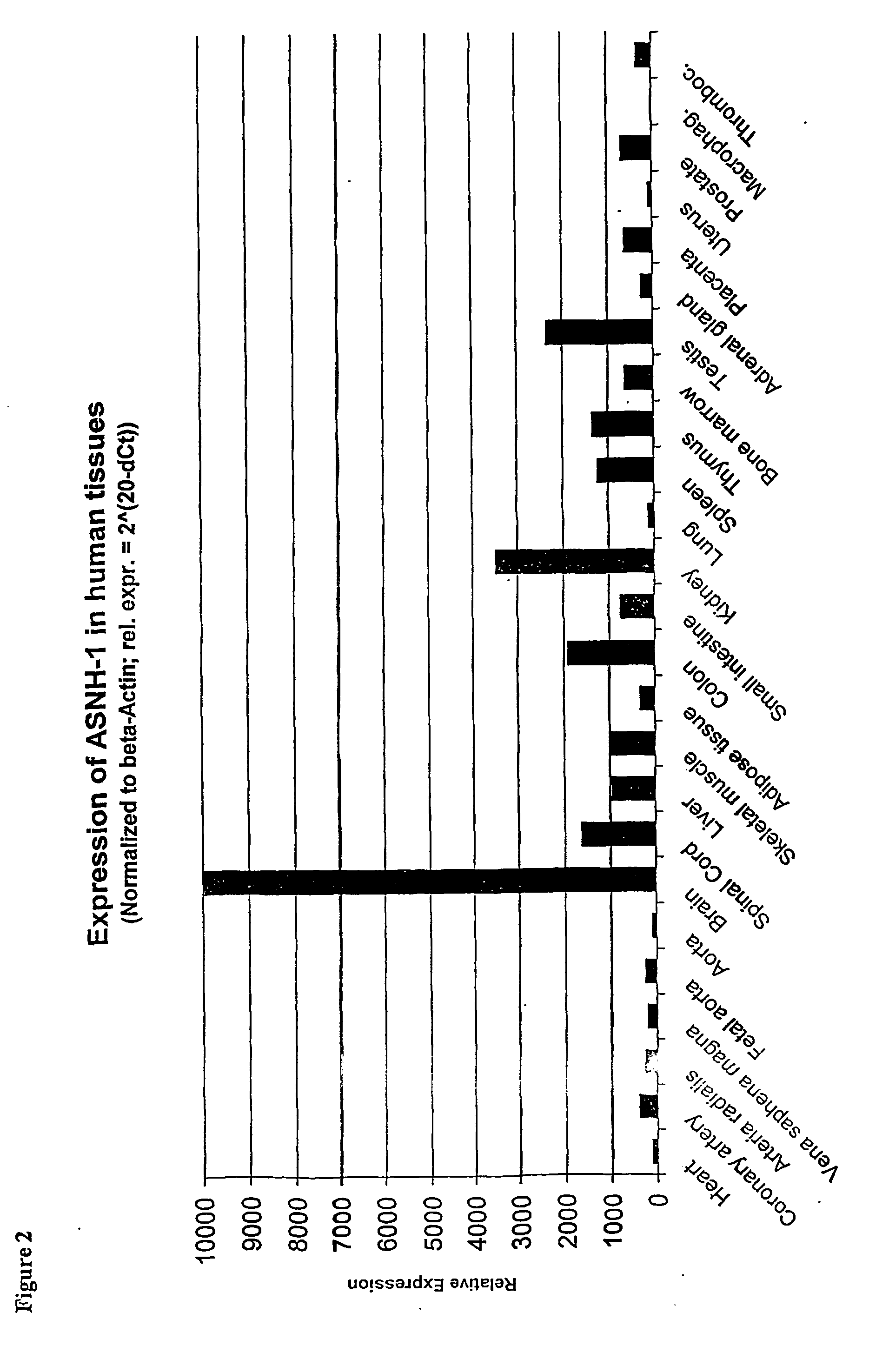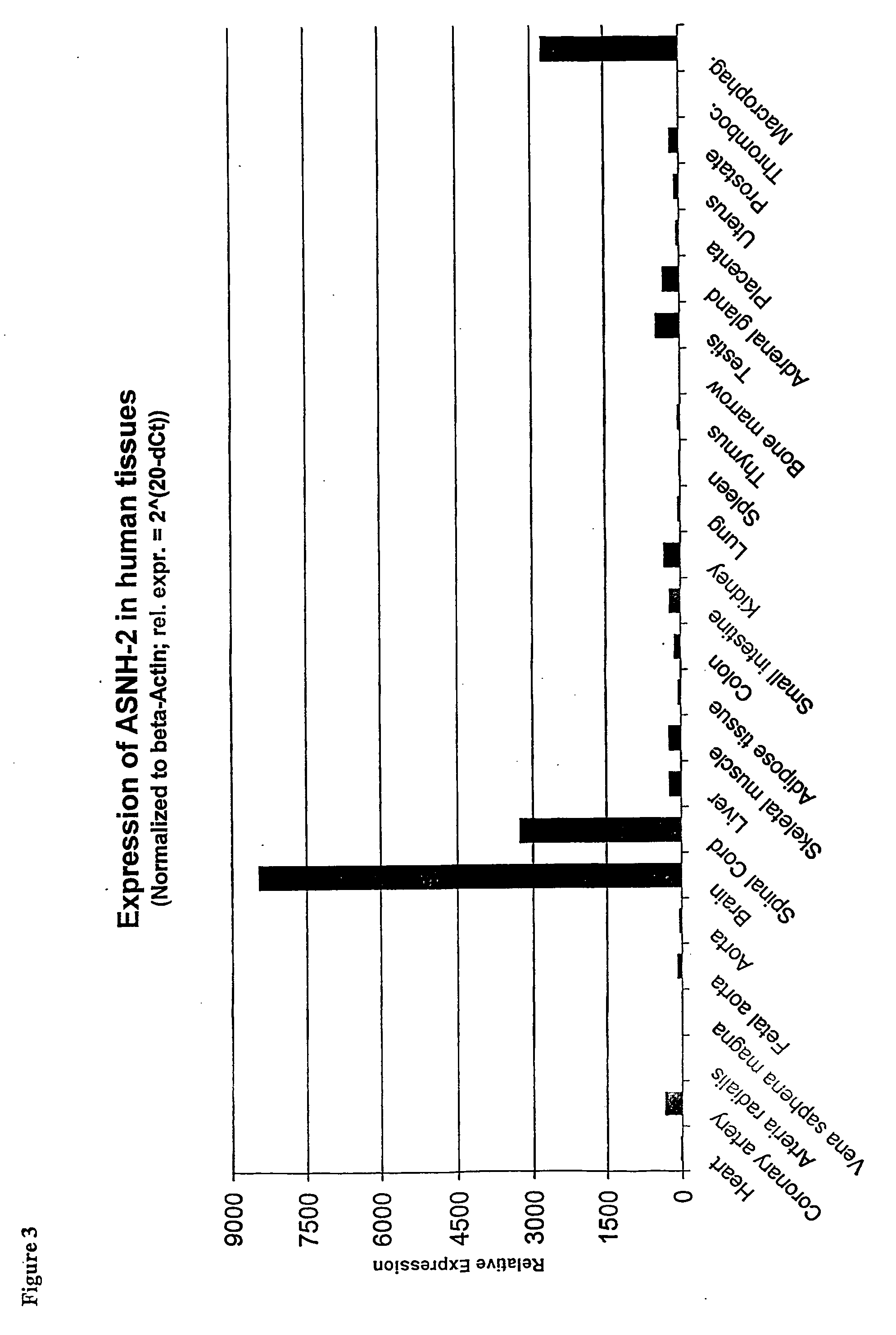Regulation of novel human asparagine-hydroxylases
- Summary
- Abstract
- Description
- Claims
- Application Information
AI Technical Summary
Benefits of technology
Problems solved by technology
Method used
Image
Examples
example 1
Expression of Recombinant Human Asparagine-Hydroxylase
[0210] The Pichia pastoris expression vector pPICZB (Invitrogen, San Diego, Calif.) is used to produce large quantities of recombinant human asparagine-hydroxylase polypeptides in yeast The asparagine-hydroxylase-encoding DNA sequence is derived from SEQ ID NO: 1, 3 or 5. Before insertion into vector pPICZB, the DNA sequence is modified by well known methods in such a way that it contains at its 5′-end an initiation codon and at its 3′-end an enterokinase cleavage site, a His6 reporter tag and a termination codon. Moreover, at both termini recognition sequences for restriction endonucleases are added and after digestion of the multiple cloning site of pPICZ B with the corresponding restriction enzymes the modified DNA sequence is ligated into pPICZB. This expression vector is designed for inducible expression in Pichia pastoris, driven by a yeast promoter. The resulting pPICZ / md-His6 vector is used to transform the yeast.
[0211...
example 2
Identification of Test Compounds that Bind to Asparagine-Hydroxylase Polypeptides
[0212] Purified asparagine-hydroxylase polypeptides comprising a glutathione-S-transferase protein and absorbed onto glutathione-derivatized wells of 96-well microtiter plates are contacted with test compounds from a small molecule library at pH 7.0 in a physiological buffer solution. Human asparagine-hydroxylase polypeptides comprise the amino acid sequence shown in SEQ ID NOs: 2, 4 and 6. The test compounds comprise a fluorescent tag. The samples are incubated for 5 minutes to one hour. Control samples are incubated in the absence of a test compound.
[0213] The buffer solution containing the test compounds is washed from the wells. Binding of a test compound to a asparagine-hydroxylase polypeptide is detected by fluorescence measurements of the contents of the wells. A test compound that increases the fluorescence in a well by at least 15% relative to fluorescence of a well in which a test compound ...
example 3
Identification of a Test Compound which Decreases Asparagine-Hydroxylase Gene Expression
[0214] A test compound is administered to a culture of human cells transfected with a asparagine-hydroxylase expression construct and incubated at 37° C. for 10 to 45 minutes. A culture of the same type of cells that have not been transfected is incubated for the same time without the test compound to provide a negative control.
[0215] RNA is isolated in the two cultures as described in Chirgwin et al., Biochem 18, 5294-99, 1979). Northern blots are prepared using 20 to 30 μg total RNA and hybridized with a 32P-labeled asparagine-hydroxylase-specific probe at 65° C. in Express-hyb (CLONTECH). The probe comprises at least 11 contiguous nucleotides selected from the complement of SEQ ID NO: 1, 3 or 5. A test compound that decreases the asparagine-hydroxylase-specific signal relative to the signal obtained in the absence of the test compound is identified as an inhibitor of asparagine-hydroxylase ...
PUM
| Property | Measurement | Unit |
|---|---|---|
| Fraction | aaaaa | aaaaa |
| Fraction | aaaaa | aaaaa |
| Fraction | aaaaa | aaaaa |
Abstract
Description
Claims
Application Information
 Login to View More
Login to View More - R&D
- Intellectual Property
- Life Sciences
- Materials
- Tech Scout
- Unparalleled Data Quality
- Higher Quality Content
- 60% Fewer Hallucinations
Browse by: Latest US Patents, China's latest patents, Technical Efficacy Thesaurus, Application Domain, Technology Topic, Popular Technical Reports.
© 2025 PatSnap. All rights reserved.Legal|Privacy policy|Modern Slavery Act Transparency Statement|Sitemap|About US| Contact US: help@patsnap.com



